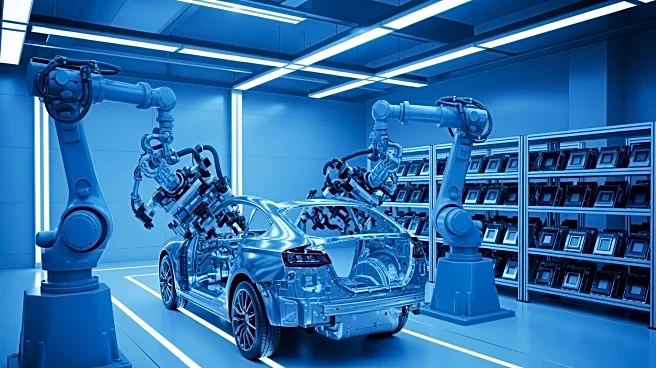What's Happening?
The automotive industry is experiencing its sharpest production decline in five years, with global light vehicle production expected to contract by 1.6% this year. Factors contributing to this decline include
faltering electric vehicle demand, tariffs, and supply chain fragilities. China's expanded export controls on rare earth materials are causing significant disruptions, particularly affecting batteries and semiconductors. The industry is grappling with policy uncertainty and manufacturing vacillation, leading to significant financial losses for major automakers.
Why It's Important?
The decline in automotive production has far-reaching implications for the industry and the economy. Tariffs and supply chain disruptions are altering the economics of North American production, leading to temporary plant closures and reduced shipments. The industry's reliance on rare earth materials from China highlights vulnerabilities in supply chains, prompting automakers to reassess their production strategies. The shift in consumer demand and regulatory requirements further complicates planning cycles, impacting long-term investments and production decisions.
What's Next?
Automakers are expected to explore alternative supply sources and invest in domestic manufacturing capabilities to mitigate supply chain risks. The industry may see a shift towards hybrid vehicles as electric vehicle adoption slows. Policy changes, such as the USMCA agreement, will play a crucial role in shaping future production strategies. Automakers will need to adapt to changing consumer preferences and regulatory landscapes to remain competitive.
Beyond the Headlines
The industry's challenges highlight the need for greater flexibility and resilience in supply chains. The focus on efficiency and cost optimization has left supply chains vulnerable to disruptions. Automakers must balance short-term production adjustments with long-term strategic planning to navigate the evolving landscape. The shift towards hybrid vehicles and the emphasis on domestic manufacturing may redefine the industry's future.












